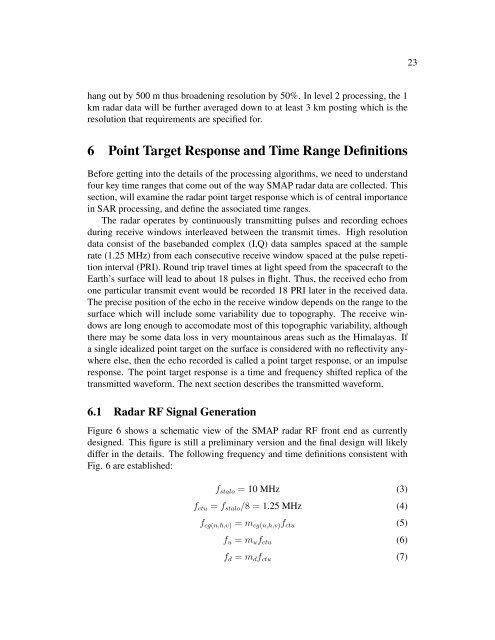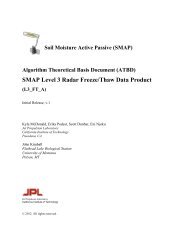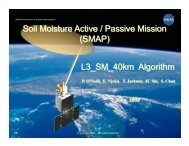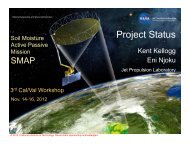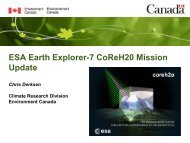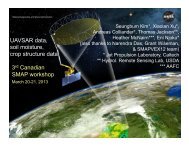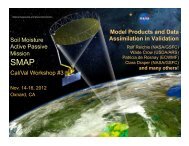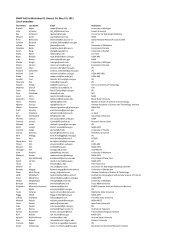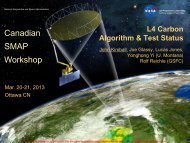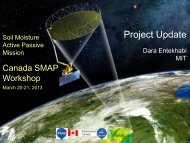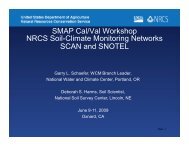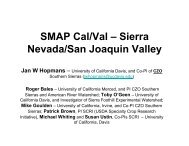(ATBD) SMAP Level 1 Radar Data Products - NASA
(ATBD) SMAP Level 1 Radar Data Products - NASA
(ATBD) SMAP Level 1 Radar Data Products - NASA
Create successful ePaper yourself
Turn your PDF publications into a flip-book with our unique Google optimized e-Paper software.
23<br />
hang out by 500 m thus broadening resolution by 50%. In level 2 processing, the 1<br />
km radar data will be further averaged down to at least 3 km posting which is the<br />
resolution that requirements are specified for.<br />
6 Point Target Response and Time Range Definitions<br />
Before getting into the details of the processing algorithms, we need to understand<br />
four key time ranges that come out of the way <strong>SMAP</strong> radar data are collected. This<br />
section, will examine the radar point target response which is of central importance<br />
in SAR processing, and define the associated time ranges.<br />
The radar operates by continuously transmitting pulses and recording echoes<br />
during receive windows interleaved between the transmit times. High resolution<br />
data consist of the basebanded complex (I,Q) data samples spaced at the sample<br />
rate (1.25 MHz) from each consecutive receive window spaced at the pulse repetition<br />
interval (PRI). Round trip travel times at light speed from the spacecraft to the<br />
Earth’s surface will lead to about 18 pulses in flight. Thus, the received echo from<br />
one particular transmit event would be recorded 18 PRI later in the received data.<br />
The precise position of the echo in the receive window depends on the range to the<br />
surface which will include some variability due to topography. The receive windows<br />
are long enough to accomodate most of this topographic variability, although<br />
there may be some data loss in very mountainous areas such as the Himalayas. If<br />
a single idealized point target on the surface is considered with no reflectivity anywhere<br />
else, then the echo recorded is called a point target response, or an impulse<br />
response. The point target response is a time and frequency shifted replica of the<br />
transmitted waveform. The next section describes the transmitted waveform.<br />
6.1 <strong>Radar</strong> RF Signal Generation<br />
Figure 6 shows a schematic view of the <strong>SMAP</strong> radar RF front end as currently<br />
designed. This figure is still a preliminary version and the final design will likely<br />
differ in the details. The following frequency and time definitions consistent with<br />
Fig. 6 are established:<br />
f stalo = 10 MHz (3)<br />
f ctu = f stalo /8 = 1.25 MHz (4)<br />
f cg(n,h,v) = m cg(n,h,v) f ctu (5)<br />
f u = m u f ctu (6)<br />
f d = m d f ctu (7)


